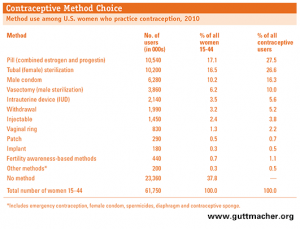 “(Debbie) Wasserman Schultz said that ‘nearly 60 percent of women who use birth control do so for more than just family planning.’
“(Debbie) Wasserman Schultz said that ‘nearly 60 percent of women who use birth control do so for more than just family planning.’
…
The statement is accurate but needs clarification or additional information. We rate it Mostly True.”
—PolitiFact Florida’s June 30 rating of a statement by Democrat Debbie Wasserman Schultz
Overview
The “Mostly True” rating of Wasserman Schultz makes a mockery of PolitiFact’s insistence that “words matter” in its fact checks.
The Facts
On Monday, June 30, 2014, the United States Supreme Court handed down its ruling on the Hobby Lobby case. In a 5-4 decision, the court ruled that the administration’s contraceptive mandate, instituted as part of the Affordable Care Act passed in 2010, ran afoul of the law by failing to enforce the mandate in a way that would not overly burden sincere religious objectors. Democratic National Committee Chair Debbie Wasserman Schultz responded the same day (via Sunshine State News, bold emphasis added):
“I am disappointed and deeply concerned by the Supreme Court’s decision today in the case of Burwell v. Hobby Lobby,” Wasserman Schultz said on Monday after the 5-4 decision was announced. “Thanks to the Affordable Care Act, millions of Americans have gained access to preventive services without out-of-pocket costs, including birth control. However, this decision takes money out of the pockets of women and their families and allows for-profit employers to deny access to certain health care benefits based on their personal beliefs. Nearly 60 percent of women who use birth control do so for more than just family planning.”
PolitiFact fact-checked Wasserman Schultz with an article published, again, on June 30. PolitiFact rated the DNC chair “Mostly True” on her statement, but with two caveats:
First, she said “women who use birth control,” even though the study looked at women who use the birth control pill specifically — a type of birth control that wasn’t even one of the ones directly at issue in the Supreme Court case.
Second, the Guttmacher study found that birth control is indeed the most common reason that women use the pill, with 86 percent saying it was one of the reasons they chose that option.
PolitiFact concluded Wasserman Schultz’s statement was “accurate but needs additional information or clarification,” the definition of its “Mostly True” rating.
Analyzing the Rhetoric
PolitiFact finds that 58 percent of women using birth control pills use them in part for reasons other than contraception, relying on a study by the Guttmacher Institute. PolitiFact notes that Wasserman Schultz did not mention “pills” when she said over 60 percent of women using birth control use it for non-contraceptive purposes. PolitiFact concludes Wasserman Schultz’s statement is accurate.
PolitiFact’s conclusion is rubbish.
If words matter, then Wasserman Schultz’s omission of “pills” makes a difference. Sure enough, if we use the Guttmacher Institute data to calculate the percentage based on women using birth control, not just birth control pills, the percentage drops to 16 percent among all women aged 15-44 who use some method of contraception. About 28 percent of women aged 15-44 who use birth control use the pill.
Wasserman Schultz’s figure is wildly off. She exaggerates the total by 263 percent, and PolitiFact fails to point it out.
That’s PolitiFact’s biggest sin in this fact check, but it’s not the only one. PolitiFact acknowledged another problem with Wasserman Schultz’s claim and failed to account for it in its final ruling (bold emphasis added):
A DNC spokeswoman said Wasserman Schultz was referring to a November 2011 report from the Guttmacher Institute, a nonprofit that studies reproductive rights. The report focused specifically on the oral birth control pill, not all contraception. (We should note that the Guttmacher institute filed a brief on the side of the federal government in the Supreme Court case. We will also note that the oral birth control pill is different from the morning-after pill the plaintiffs objected to funding.)
Hobby Lobby’s health insurance plan covered birth control pills before the government’s contraception mandate went into effect. Is it possible some religious employer would object to funding birth control pills as part of a health insurance plan? We suppose so. But with respect to the just-decided Supreme Court case, Wasserman Schultz is waving a red herring. PolitiFact supports her distraction with its half-hearted fact checking.
Wasserman Schultz’s argument against the Hobby Lobby decision rests on a bogus statistic, yet PolitiFact encourages its readers to think otherwise.
This Calls for Charity?
In fact checking, we represent perhaps the foremost proponents of the principle of charitable interpretation. If we can interpret Wasserman Schultz’s statement charitably and make the best sense of it that way, then that’s what we should do.
PolitiFact gives Wasserman Schultz its “Mostly True” rating, so far as we can tell, because it is true that 58 percent of birth control pill users in the 15-44 age range use the pill, at least in part, for purposes other than contraception.
What if Wasserman Schultz meant to say the word “pill” in her statement?
We can’t make that leap. “Birth control” in ordinary parlance means any form of birth control. The Guttmacher Institute’s statistics even include “withdrawal” as a birth control method. Worse for that interpretation, “the pill” is commonly understood to mean the birth control pill. We tried and failed to find Wasserman Schultz making a parallel statement including the word “pill.” Wasserman Schultz’s phrasing is inconsistent with a slip of the tongue. It is consistent with ambiguous phrasing intended to mislead an audience.
Summary
“The statement [“nearly 60 percent of women who use birth control do so for more than just family planning”] is accurate but needs clarification or additional information.”
Wasserman Schultz’s statement is false, therefore PolitiFact’s statement is false. PolitiFact’s clarification and added information demonstrate her statement was false. About 60 percent of women who use the birth control pill have reasons for using it apart from contraception, such as painful menstruation, endometriosis, or acne.
 “nearly 60 percent of women who use birth control do so for more than just family planning”
“nearly 60 percent of women who use birth control do so for more than just family planning”
Wasserman Schultz’s focus on a statistic attached to birth control pills, when the legal issue had to do with other birth control methods that may cause abortion, counts as a red herring fallacy. Her statement misleads the audience to overestimate the number of women using birth control pills for non-contraceptive purposes—a fallacy of ambiguity. There’s also the subtext of a slippery slope fallacy, which we’ll address directly in an upcoming fact check.
References
Derby, Kevin. “Florida Delegation Splits on Party Lines in Hobby Lobby Ruling.” Sunshine State News. Sunshine State News, 01 July 2014. Web. 01 July 2014.
Adair, Bill. “The Principles of PolitiFact, PunditFact and the Truth-O-Meter.” PolitiFact. Tampa Bay Times, 01 Nov. 2013. Web. 02 July 2014.
Sherman, Amy. “Debbie Wasserman Schultz Decries Impact of Hobby Lobby Decision on Birth Control.” PolitiFact Florida. Tampa Bay Times, 30 June 2014. Web. 30 June 2014.
Breitman, Kendall. “Debbie Wasserman Schultz: Hobby Lobby Ruling Turns ‘dial Back’.” POLITICO. POLITICO LLC, 30 June 2014. Web. 30 June 2014.
White, Bryan. “PolitiFact Takes the Blue Pill on Boxer’s Contraception Claim.” Politifactbias.com. PolitiFact Bias, 27 Mar. 2014. Web. 01 July 2014.
Jones, Rachel K. “Beyond Birth Control: The Overlooked Benefits Of Oral Contraceptive Pills.” Guttmacher.org. The Guttmacher Institute, Nov. 2011. Web. 1 July 2014.
“Fact Sheet: Contraceptive Use in the United States.” Guttmacher.org. The Guttmacher Institute, June 2014. Web. 1 July 2014.
Daniels, Kimberly, Ph.D., William D. Mosher, Ph.D., and Jo Jones, Ph.D. “Contraceptive Methods Women Have Ever Used: United States, 1982–2010.” CDC.gov. National Center for Health Statistics, 14 Feb. 2013. Web. 1 July 2014.






